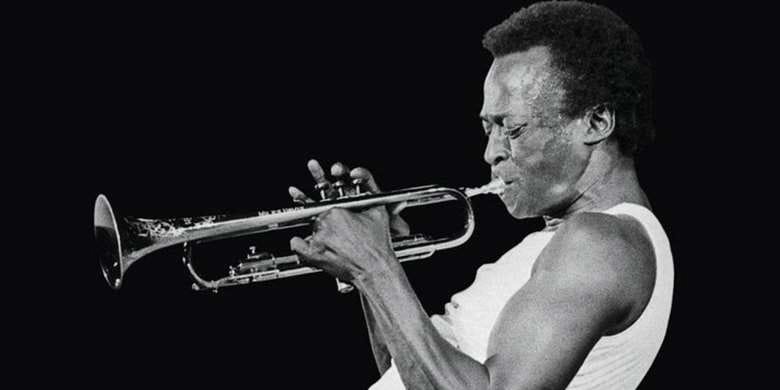Your cart is currently empty!
The riddle
Miles Davis once said:
It’s not the notes you play…
it’s the notes you don’t play.
At first glance, it sounds like a riddle. What could he mean? What are the notes you don’t play, and why should they matter?
Davis was known in jazz for leaving space in the music. At a time when many musicians filled every second with fast, virtuosic runs, he stood out by doing the opposite: choosing fewer notes, giving them room, and playing with intention.
So what’s in the notes you don’t play?… and most importantly… what does Tango have to do with it?
Before you go any further… just a quick note.
If you follow the blog on social media, you might be missing some posts.
Subscribing by email is the best way to stay in touch and never miss a story.
The Museum Analogy
In a class with Horacio Godoy, he gave an example that stayed with me. He said: Imagine going to the Louvre to see the Mona Lisa. You’ll notice the painting stands alone on a wall, in the middle of a large room. Nothing distracts from it.
He was right. This is a common pattern. I had the same experience at Ancient Olympia a few months ago, where the statue of Hermes of Praxiteles, one of Greece’s most celebrated works, stands alone in an empty room. No other statues nearby.
The idea is simple: when something is truly important, you let it stand on its own. Surrounded by dozens of other paintings, the Mona Lisa would be just another painting. But on an empty wall? It becomes unforgettable.
We usually focus only on the things that stand out. But we rarely think about the silence and emptiness around them… the space that allows them to shine.
That’s exactly what Miles Davis meant. The pauses, the space, the restraint are what give power to the few notes that are played. The “notes not played” are the empty wall.
💥In case you missed it💥
The Rejections in Tango survey results are out.
Watch them here before the next topic takes over.
The Dance
I often find myself drawn to certain Tango dancers. At first, I thought it was the simplicity of their movement. But the more I watched, the more I realised it wasn’t just that. It was the way they used space. Not physical space… temporal space.
It wasn’t the steps themselves… it was the absence of steps that gave weight to each movement. A pause, a stillness, a held breath between steps. That contrast between absence and presence is what made their dancing unforgettable.
When I read Miles Davis’ quote, I thought: this is it. We focus so much on the steps, the moves, the choreography, that we forget about the pauses. But the steps alone, without stillness around them, would be lost in an ocean of constant movement.
Tango is always tied to the music. And in Tango music, there’s always something happening that you could move to. But here is your choice: you can be the Miles Davis of the orchestra. You can create space, highlight what matters, and let your movements breathe.
Even a song you’ve heard a hundred times can feel new when danced this way. By choosing what to move on to and what not to move on to, you make the music your own. You highlight what speaks to you. And that is how your dance becomes different from everyone else’s.
But remember: to highlight anything, you first need to create emptiness around it.
Remember
It’s not the notes you dance…
It’s the notes you don’t dance.
If you like this quote and you want a reminder of it when you dance…
👉 You can check out the related merch here.
Tonight’s Goodnight Tango
Tonight’s Goodnight Tango is a version of Passional by Ruben Juarez. A version that has already taken so much out of its execution to create this space for highlighting what is important to the artist. And not only that. It is also danced by Horacio Godoy and Cecillia Berra in an exemplary way that demonstrates how the space created in the steps can truly make the movement stand out.
So how about you? How many notes don’t you dance?
Comment below or join the discussion in the community
Need to talk privately? Contact me personally.
Or… just spread the word!
2 responses to “It’s not the notes you dance”
[…] my previous post, I talked about how absence creates or highlights presence. That was about three weeks ago. Yes. I took a break from writing (or at least from posting) for a […]
[…] It’s not the notes you dance […]


Leave a Reply